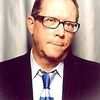You don't have to be a Deadhead or a Ken Kesey-phile to find the fun and the wistfulness in Magic Trip, Alex Gibney and Alison Ellwood's reconstruction of the famous cross-country bus trip by Ken Kesey and his Merry Pranksters in 1964.
On the other hand, if you're someone who read about (and, perhaps, identified with and tried to emulate) Kesey's adventures in Tom Wolfe's epochal The Electric Kool-Aid Acid Test, well, this movie is like a secret entryway into a world you could only imagine in the past. Suddenly, there they all are, in the flesh, on the bus, confronting the square America that had no clue about the mind-blowing consciousness experiments that they were involved with: Kesey, Neil Cassady, Ken Babbs, Gretchen Fetchen and all the rest.
Kesey-philes have long heard about but long since given up on seeing the hours of film footage that were shot as Kesey and his troupe set out from his Bay Area home on a multi-colored bus dubbed "Further" by Kesey and his troops. The story was that the footage itself was in rough shape, shot on film but recorded on tape -- so that time had had its way with the already challenging picture-sound synch, making it impossible for it to ever be put right.
But Gibney and Ellwood, thanks to the wonders of digital technology, have found ways to mostly sync the sound with the picture -- and discovered stylistic solutions to meld picture with sound, even when the words didn't necessarily match up with the people who were saying them.
They went further, to coin a phrase, tracking down and interviewing the participants in the trip and using their commentary -- on the footage as it unspools -- to offer both a first-hand look at what was happening and the 20/20 hindsight that comes with almost five decades of memory.
So, as Wolfe revealed, it wasn't all idyllic. There were sexual politics, both in terms of the power structure of the trip (despite Kesey's egalitarian approach) and in terms of who was sleeping with whom. More importantly, there was the acid -- the LSD that they took to keep things weird and give them the kind of vision about their journey that simply riding on the bus couldn't provide.
The backstory is also explored: about Kesey's history as an athlete and would-be writer who worked in a mental hospital while writing One Flew Over the Cuckoo's Nest and who volunteered for U.S. Army experiments at Stanford University in the early 1960s, in which he was given LSD, among other drugs, and left alone to record his thoughts into a tape recorder.
Indeed, that's one of the film's most fascinating sequences; Gibney and Ellwood got a hold of the actual audio tapes from Kesey's sessions, then set animation to the sound of Kesey's voice, picturing the images that he unspools from his obviously altered consciousness.
The bus trip itself is a fascinating mess of mishaps, unintended scenes and bizarre behavior. The trip was originally intended as a cross-country run for Kesey and his Pranksters from the Bay Area to the New York World's Fair of 1964-65. Kesey connected with Cassady, who served as the model for Dean Moriarty in Jack Kerouac's On the Road and let him drive the bus. Cassady, a happy-go-lucky speed freak, drove the whole way, rapping a nonstop patter of hipster jive and philosophy.
Their route took them across the South -- and while this was before any of them had long hair (which became as divisive a symbol of youthful rebellion as there was), the Pranksters were clearly identifiable as freaks, in a part of the country where tolerance remains low to this day. There's a particularly amusing moment when the acid-tripping Pranksters pull over to take a swim at a beach in Louisiana -- and don't realize until they're all in the water that they've integrated a blacks-only swimming area in the Civil Rights-era South.
Magic Trip is rich with such moments, including an impromptu visit to the estate of Timothy Leary, whose approach to LSD was much more meditative and less yippee-ki-yay than the Pranksters. It's an uncomfortable meeting of two avatars of a mind-bending era, in which one of the avatars (Leary) never even shows up.
Kesey was far ahead of his time, in his approach to consciousness and authority, as well as American exceptionalism. What's that saying about a prophet without honor in his own country? You see one on clear display in Magic Trip.
Find more reviews, interviews and commentary on my website.
